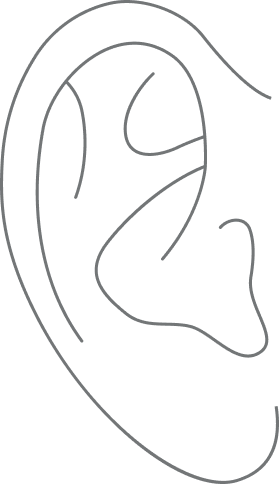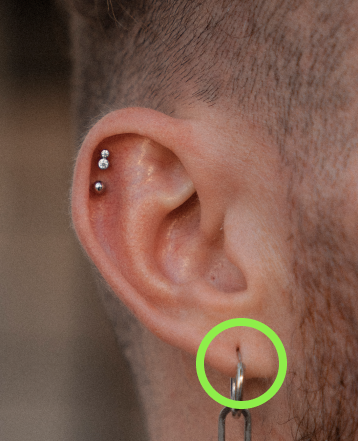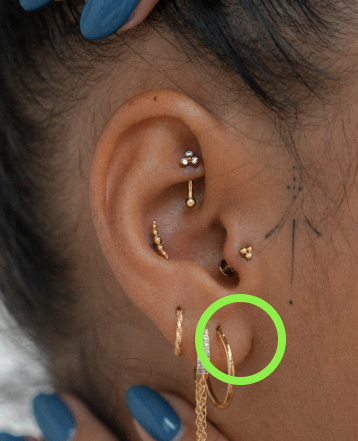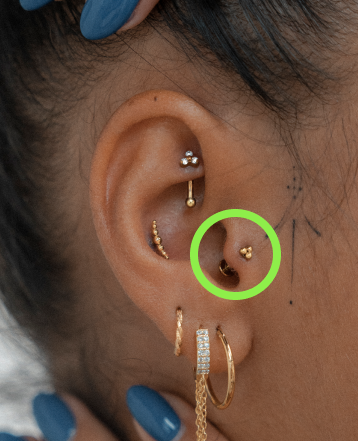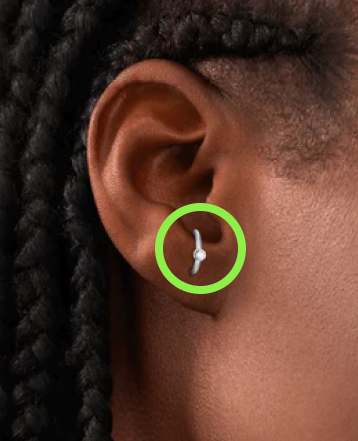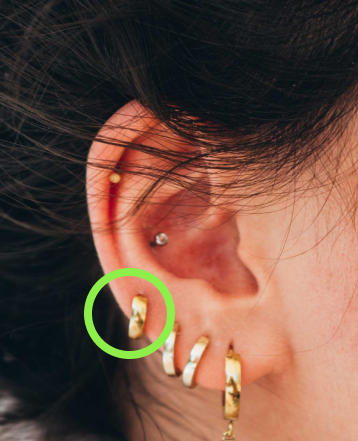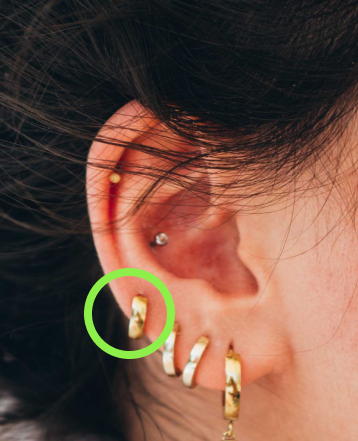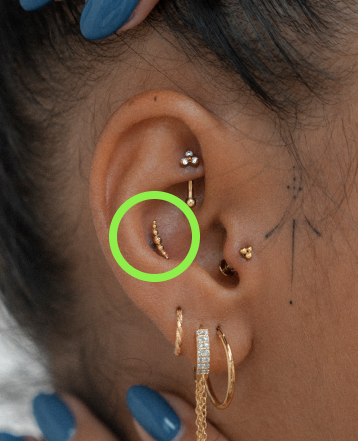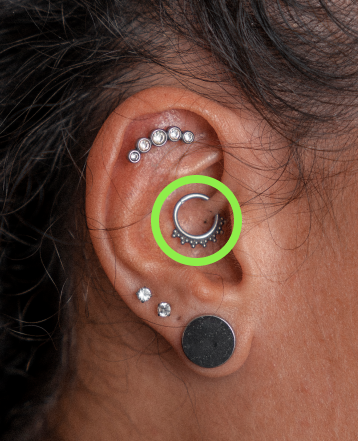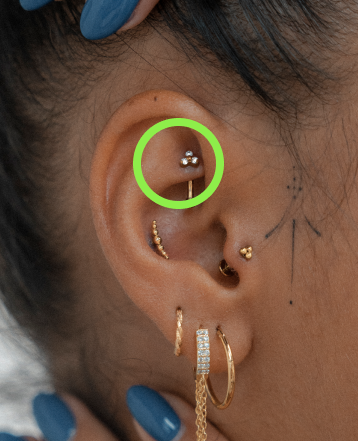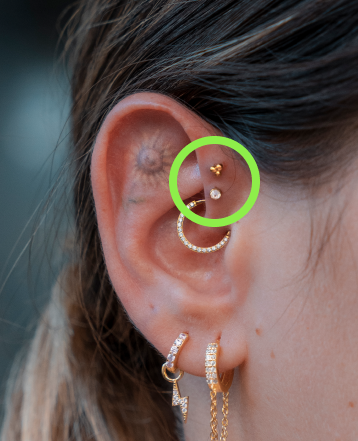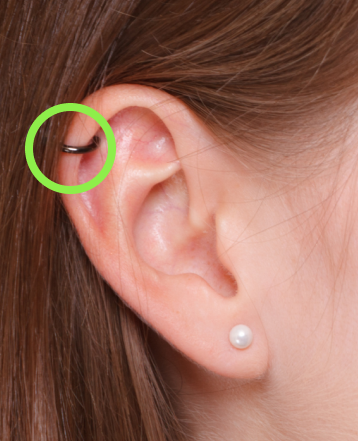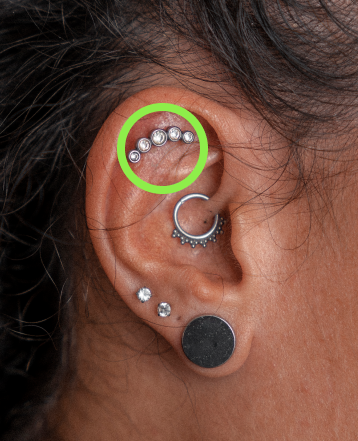There are different types and styles of piercing depending on where in the ear you decide to pierce. Among them, we can highlight the following:
Lobe and upper lobe: these are the most common areas for drilling. In fact, the lobe earring is the one we used to wear when we were babies. The earlobe is the lower, fleshy, rounded part and the upper one is right next to it.
Helix and counterhelix: this is one of the most demanded piercings, and it is located right on the edge of the ear, the outer cartilage that runs along the side and reaches the top. That is why we call it the counterhelix.
Antihelix, rook and daith piercings: the first refers to the part of the cartilage that is already located in the inner part of the ear and attached to the face. The rook piercing would be in the inner cartilage of the ear, located in the upper part of the ear. And the daith is found in the cartilage of the central part of the ear.
Tragus and antitragus: these are located in the area of the cartilage that is closest to the face and gives access to the ear. Just opposite, also marking the entrance to the ear, is the antitragus.


